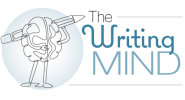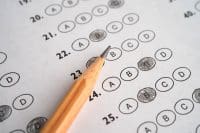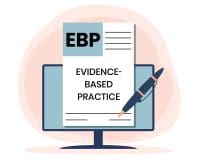You revel in the “A” you received for your latest school paper. Is the next step to publish your article? It might be, but first you’ll need to rethink and rework the paper to make it suitable for publication.
Rethink your purpose and target audience
Your purpose in writing the paper was likely to get a good grade and to prove to your instructor you knew the content you were expected to learn. Or, in the case of a doctor of nursing practice (DNP) project or dissertation, you needed to prove your understanding of appropriate processes and methodologies so you could receive your degree.
Now you have a new purpose and a new audience—to provide information for nurses in practice. Start asking the same questions your nurse readers will subconsciously (or consciously) ask: “Why should I read this article? What benefits will I gain? How hard is it to read?”
For longer “papers” such as capstone projects, you’ll need to narrow your purpose, or topic, to something that will fit into the parameters of a journal article. Lorraine Steefel provides this example:
Purpose of capstone project: Examine the rate of hospital readmissions of patients with heart failure (HF) within 30 days post-discharge by examining the documented use of core measure HF-1 discharge instructions
Possible focus areas for a journal article:
- Findings of the capstone project; that is, whether use of core measure HF-1 discharge instructions resulted in fewer readmissions, and if so, why
- Core measures for HF-1 discharge instructions, what they are and their benefits
- How to put core measure HF-1 discharge instructions into use.
It may help to create a summary statement to further focus the topic. For example, let’s say your paper or project was about the problem of impaired cognitive function in patients with chronic kidney disease and how this can lead to nonadherence with the treatment regimen. You likely provided a fair amount of background information about cognitive impairment in this patient group and the many problems it can create. Now that you’re rethinking the topic, you realize that the most valuable information is related to medication adherence. Your statement might be: This article provides nurses with strategies they can use to promote medication adherence in patients with chronic kidney disease who have cognitive impairment.
Ask first
Once you know the focus of your article and your target audience, send a query email to the journal you feel is the best match. If you mention that your article is based on a school paper or DNP project, make it clear that you plan to adapt it to fit the journal’s needs. If the editor is open to your topic, you’re ready to rework your article, based on several strategies, starting with prune.
Prune
In many cases, your paper will be too long for a journal article. Cut out unnecessary information, keeping your purpose in mind. Use your summary statement as a guide. For example, in that article about medication adherence in chronic kidney disease and cognitive impairment, you would reduce the background information about the incidence of cognitive impairment and eliminate the section on how it affects adherence to diet—instead, you are laser-focused on medications.
You may find that creating a new outline for the article based on your statement is helpful. Keep in mind that you don’t need to prove how much you know; instead you need to provide readers with what they need to know. Focus on practical information that readers can apply in their work setting.
In her excellent book, Publishing a Dissertation or DNP Project, Karen Roush provides several good suggestions for reworking sections common to a dissertation or DNP project. Here are a few of them, but I’d encourage you to read the entire book.
Introduction/literature review. Roush suggests asking these questions when reworking this section: Why should we care? What’s currently known or being done? What do we need to learn or do now, and why?
Methods. You’ll need to include the essentials such as study design, sample, setting, data collection and analysis, and human subject protection, but be succinct. For example, state the design you used and jettison your detailed description of why you chose it.
Analysis. You don’t need to include as much detail as to why you chose the statistical test you chose; simply state what you did.
Results. State what you found. This is a good place to use tables to present data such as demographics.
Discussion. Here is where you interpret the results. To shorten, don’t repeat information that’s in the literature review or the detailed findings in the results section.
No matter what school document you’re converting (paper, dissertation, or DNP project), avoid long, convoluted sentences. Nurses don’t have much spare time, so you need to make your points succinctly.
Don’t over-reference
Evaluate references to determine which are truly necessary. An over-referenced manuscript is a sign of a school paper. You don’t have to reference every sentence in an article, and you don’t have to reference commonly known facts such as “critical care nurses face ethical dilemmas.” If you currently have several references for a point you’re making, select the one or two that are the most valuable for the reader.
Consider tables and figures
Review each table and figure and ask yourself: Is it needed? Does it work for the target reader? Be sure figures will resonate with clinicians. For example, most nurses aren’t familiar with scatter plots, so either provide more description or simply state what the plot shows. On the other hand, consider if some text would work better as a table or figure and make it easier for the reader to absorb the information.
Use guidelines
An underused resource for authors is the Equator Network, a website that houses many guidelines for different types of articles. Each guideline provides what amounts to GPS instructions for a specific type of article. For example, the SQUIRE 2.0 guidelines (Standards for QUality Improvement Reporting Excellence) provide a framework for reporting quality improvement (QI) projects. While your article doesn’t necessarily have to follow the guidelines exactly, they provide a template that can make it easier to write your article.
Follow the journal’s format and guidelines
I listed this last, so that you will, hopefully, remember it, but it also could be first because it’s the most important step. Analyzing the journal’s published articles as to structure, length, and style, will help you understand what will work best for your own article, and the author guidelines will let you know key factors such as length (word count) and if any specific formats are required. For instance, some journals require authors to follow the SQUIRE 2.0 guidelines for QI articles.
Best wishes for success in converting your paper!
References
Roush K. Publishing a Dissertation or DNP Project. Indianapolis: Sigma Theta Tau International; 2020.
Steefel L. From presentation or school paper to publication In: Saver C. Anatomy of Writing for Publication for Nurses, 3rd ed. Indianapolis: Sigma Theta Tau International; 2017.



















